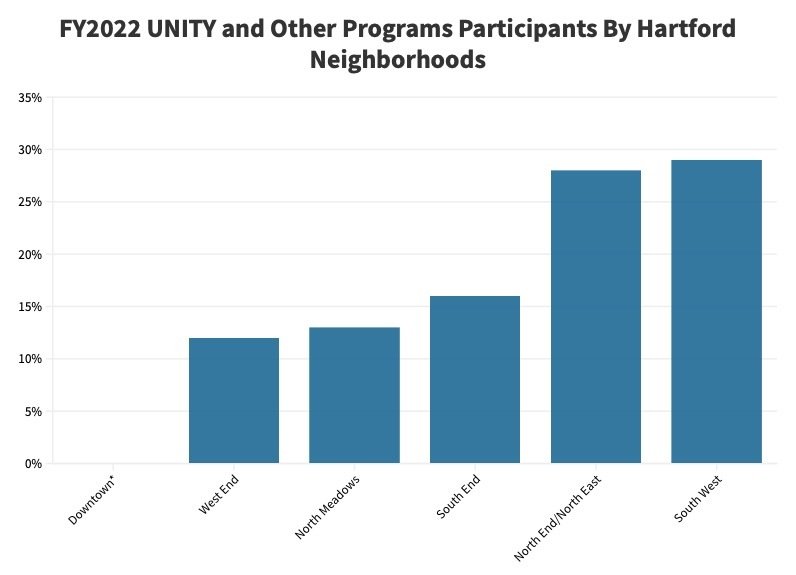HDC & Hartford Youth Researchers Issue Report on First Year of Hartford UNITY Project
The Hartford Data Collaborative (HDC) provided the City of Hartford’s Department of Families, Children, Youth, and Recreation (DFCYR) with the first report on its investment in programs for children and youth starting in the summer of 2021 and continuing through May 30, 2022 (FY2022). Hartford’s UNITY Program provides grants to local program providers serving Hartford youth and is funded by the federal American Rescue Plan Act and is designed to engage children after the isolation of the COVID-19 pandemic. This project was the first in Hartford to require providers receiving over $5,000 in grant funds to join the Hartford Data Collaborative and share their data with HDC.
In April 2022, HDC received the first round of midpoint data for some of the UNITY grantees, including programs serving children over the summer of 2021. Many of the programs were still learning how to provide services and collect data about the children and youth they served. CTData staff worked with Hartford Youth Researchers to review and analyze the midpoint data. We provided findings in a June 2022 Data Walk to City and community officials.
The City provided the full year of FY2022 data for 34 providers in August 2022. HDC staff and Hartford Youth Researchers compiled the data, linked each provider’s datasets using name and date of birth, and analyzed the findings. Program providers did not always provide data about all characteristics of children and youth. Information about participants’ age, gender, race, ethnicity, and home address were missing in some cases.
Through its analysis, HDC and Youth Researchers found:
Providers served 2,288 unique Hartford children and youth
13% of children and youth participated in more than one program
The age group with the highest participation rate was youth ages 14-18 (38%), and the second highest was youth ages 19-24 (19%).
52% of program participants were male, 39% female, and less than one percent were transgender or non-binary
55% of program participants reported being not Hispanic/Latino; 45% reported being Hispanic/Latino
68% of participants reported being Black or African American, 13% reported being White; 12% identified as “other.” Three percent identified as multiracial, 2% as Asian, and less than 1% as American Indican or Alaska Native.
HDC had limited insights into program participation by neighborhood because 52% of program participants did not provide their address. Of the data available, HDC found that eleven out of the 17 neighborhoods did not have any youth participants. The neighborhoods with the highest representation were Southwest (29%); North End/Northeast(28%); and South End (16%)
More details on the methodology can be found in the full report here. HDC staff provided data capacity training to FY2023 UNITY grantees and will collect, integrate, and analyze program data for FY2023 when it is available.

